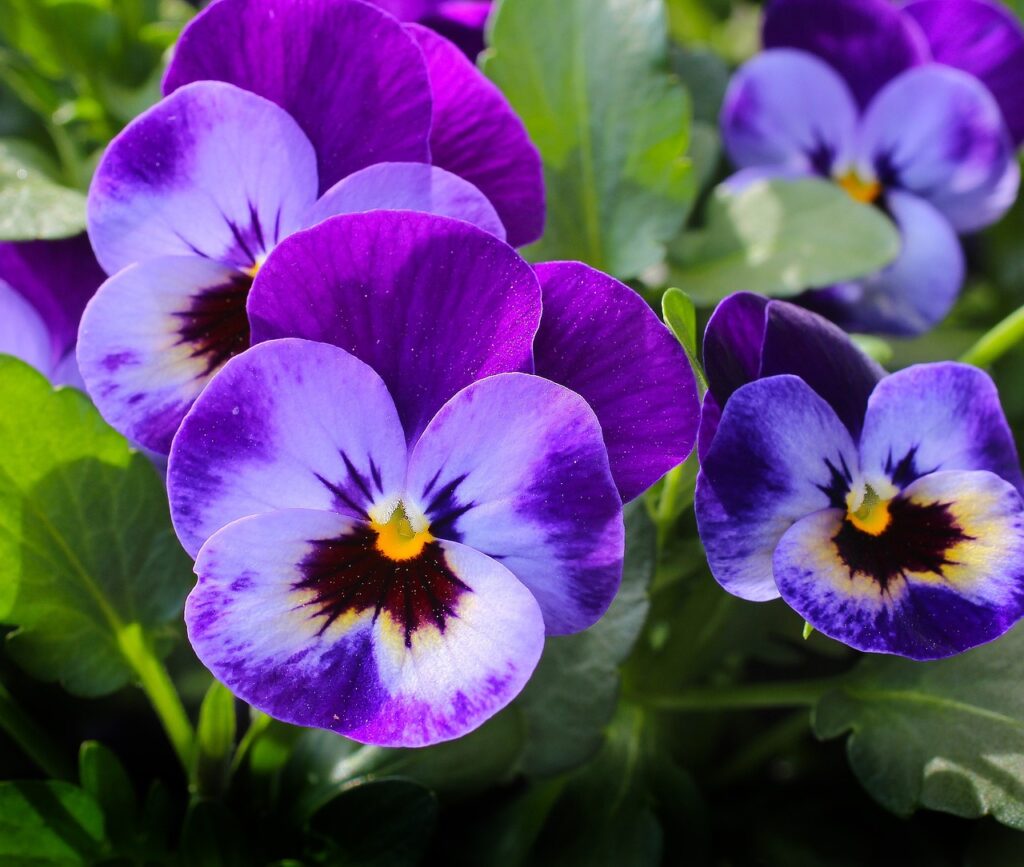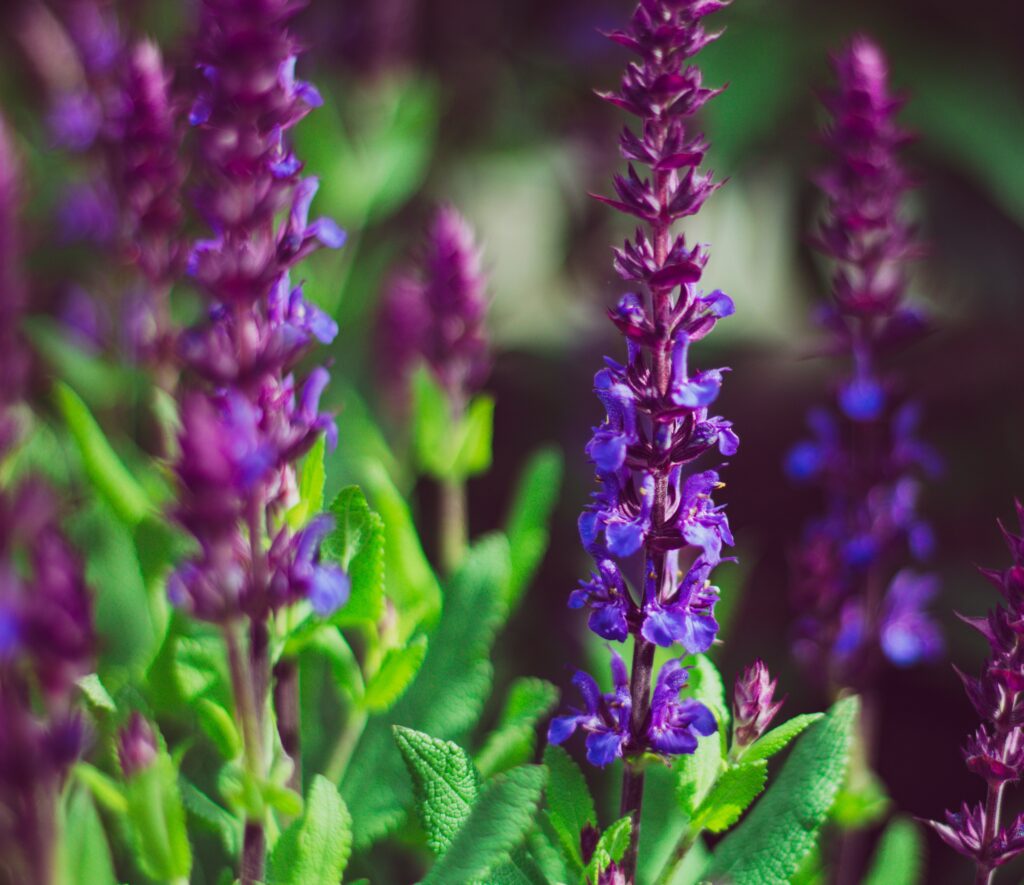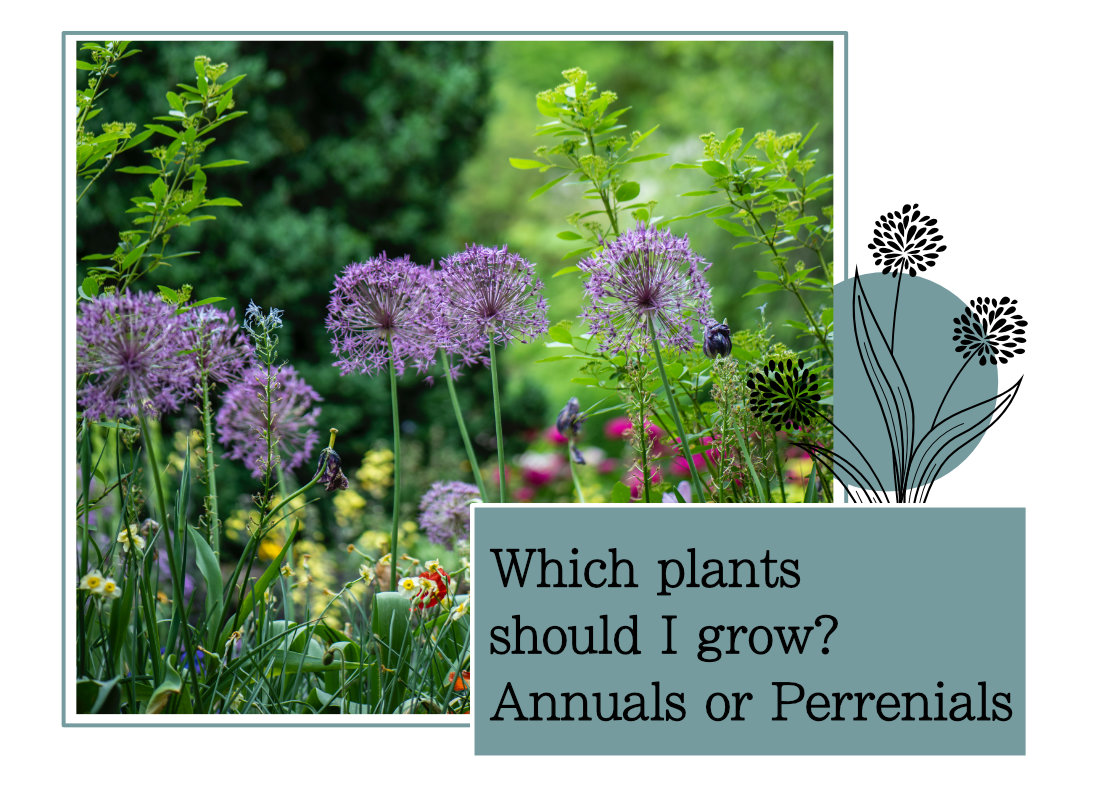Which plants should I grow? Annuals or Perennials
There are so many varieties of plants readily available to buy or grow. It can sometimes be confusing as to whether you should choose to grow annuals or perennials.
Knowing some basic gardening terms will help and knowing if a plant is annual or perennial definitely helps with successful growing.
The main difference between annuals and perennials is the life cycle.
Annuals will germinate, bloom and die all in one season whereas perennials can last for many years.
There are also Biennial plants which will last two years.

So which plants should I choose, Annuals or Perennials?
Annuals are great for adding summer colour, especially to pots and baskets. They are easy to care for and you don’t have to worry about winter care. They do only last one season but some seeds can be taken from certain varieties of plants and sown for the following year.
Annuals are a great option to provide instant summer colour and can also look great amongst perennials to add variety each year.
Perennials provide structure for your garden, you know what’s going to grow and where it will grow each year. Perennials can provide cuttings or be divided each year providing you with additional plants for other areas of your garden.

Choosing perennials
Gardening terminology can sometimes be confusing and perennial plants come in so many varieties it can sometimes make it hard to choose ones which are suitable for you and your garden.
The best thing to do is a bit of research! It is often tempting to just buy plants, especially when you see them blooming in garden centres. Perennials however need a bit more thought as to where they are going to be planted.
So first, it is best to think about where they are going to live! Have a good look at your garden and decide where you would like the same plant to grow year after year.
Check whether the area gets:
- Full sun, or is it quite shaded?
- Is there room for the plant to grow and spread?
- Does the soil drain or get quite waterlogged?
- Is it a windy area or sheltered form the elements?
Choosing a plant which suits your gardens conditions is really important to the success of the plant thriving and surviving.
There are perennials to suit every garden and to suit all growing conditions. It is just a case of picking the right plant for the right space!
RHS has a great search tool which allows you to put in the growing conditions and will find you suitable plants.
This is a great tool especially when choosing perennials as you will be able to get more details about the plant, how it will look, it’s spread as well as care instructions.
Some perennials are really quite easy to grow and don’t need too much attention. If you are looking for low maintenance perennials. Read the post 10 easy to grow perennial plants for inspiration.
Perennials are so worth investing in, although more costly initially and require a bit more thought. It is wonderful to see those trusty perennials set your garden into bloom each spring.
Annuals or perennials?
Do both!
Think of perennials as your base, even just a few well positioned perennials will provide interest and colour to your garden. There are so many varieties, textures and colours to choose from and will provide blooms for years.
Adding Annuals each year is perfect for adding vibrant summer colour. Hanging baskets, tubs and containers look amazing with annuals.
Both can be grown from seed, some direct and some need to be germinated.
Many garden centres have garden ready plants available in spring and summer ready to go directly into your garden adding instant colour.
Just remember to check the positioning suits the plant!
Glossary
Knowing a few gardening terms can really help when it comes to choosing plants. It is especially helpful when choosing perennials as hopefully they will be with you for years.
Below are a few gardening terms, easy to learn and remember and often associated with perennial planting.
Binennial
A plant that completes its entire life cycle in two years, growing in the first year and reproducing and dying in the second.
Deciduous
Some perennials are deciduous, this means they will shed the leaves each winter and grow again in the spring.
Evergreen Perennial
A perennial which keeps its greenery all year.
Half-hardy annual
A plant that completes its entire life cycle (growth, reproduction, death) in one season. Can be grown outdoors but requires winter protection from frosts and temperatures below 0C.
Half hardy biennial
A plant that completes its entire life cycle in two years, growing in the first year and reproducing and dying in the second. Can be grown outdoors but requires winter protection from frosts and temperatures below 0C
Half-hardy perennial
A plant that lives for more than two years. Can be grown outdoors but requires winter protection from frosts and temperatures below 0C.
Hardy annual
A plant that completes its entire life cycle (growth, reproduction, death) in one season. Capable of withstanding outdoor winter temperatures down to -15C.
Hardy biennial
A plant that completes its entire life cycle in two years, growing in the first year and reproducing and dying in the second. Capable of withstanding outdoor winter temperatures down to -15C.
Hardy perennial
A plant that lives for more than two years. Capable of withstanding outdoor winter temperatures down to -15C.
Herbaceous Plant
A non-woody perennial plant, often dying back in the winter and becoming dormant by means of underground rootstocks or a woody base. Growth resumes in the spring.
Perennial
A plant that lives for more than two years.
Semi-evergreen
A plant that retains most or some of its foliage throughout the year.
Tender perennial
A plant that lives for more than two years. Susceptible to damage or death at temperatures below 5C.

